Sigma Q&A Part I: CEO Kazuto Yamaki explains why so few Pentax-mount lenses, and much more
posted Wednesday, April 2, 2014 at 5:07 PM EDT
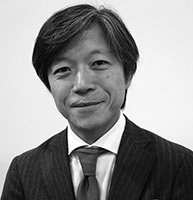
Chief Executive Officer,
Sigma Corp.
Imaging Resource publisher and editor-in-chief Dave Etchells recently interviewed a number of industry leaders at the annual CP+ tradeshow, held last February in Yokohama, Japan. Here's a transcript of his interview with Kazuto Yamaki, CEO of Sigma Corporation. Among other things, we learn why third-party lenses for the Pentax mount are so scarce (this part updated April 12) and why the newly-announced Sigma dp1 Quattro camera - -- as well as its siblings the dp2 Quattro and dp3 Quattro - -- have such an unusual shape.
Dave Etchells/Imaging Resource: The camera market is becoming increasingly fragmented. In the past, Canon and Nikon have dominated everything, but that seems to be changing: We have Olympus and Panasonic with Micro Four Thirds; we have Sony with E-mount, FE lenses, and A-mount; Fuji has the X-mount. They're all stealing market share, so there are many more mounts to deal with. What's your strategy for dealing with such an increasingly fragmented market?
Kazuto Yamaki/Sigma: We believe it's our mission to support as many systems as possible, as a lens manufacturer. Especially if they are photo enthusiasts; our main customers are photo enthusiasts, so we try to support as many systems as possible. There are limitations, of course -- especially the engineering resources are limited -- so we have to carefully choose which system to support. Basically, we'd like to support as many as we can.
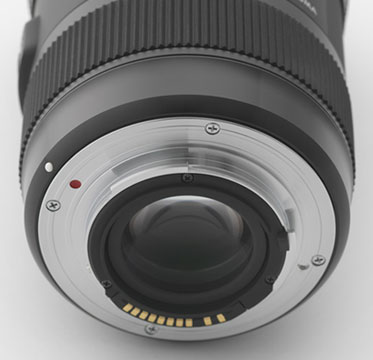
DE: With many mirrorless cameras having very short flange distances, can you use a similar design for multiple platforms? Basically, design for the largest flange distance, and then just extend the barrel for shorter ones?
KY: The same optics?
DE: Yeah, the same optics.
KY: Yes, we can do that. If we use the same optics, then we can apply to other mounts…
DE: To a different mount, and reprogram the microprocessor.
KY: Yes, yes.
DE: That makes sense. We've heard a lot of favorable comments from readers about your program of offering to change lens mounts. People are really liking that a lot.
KY: Thank you.
DE: It's a big deal for them. You have your DN series of lenses for compact system cameras, one of my editors was asking, are there any plans to make EOS M lenses in the DN line?
KY: We have not decided yet.
DE: Haven't decided yet? Yeah. My sense is that the EOS M line is still fairly low volume.
KY: Yes, low volume so far.
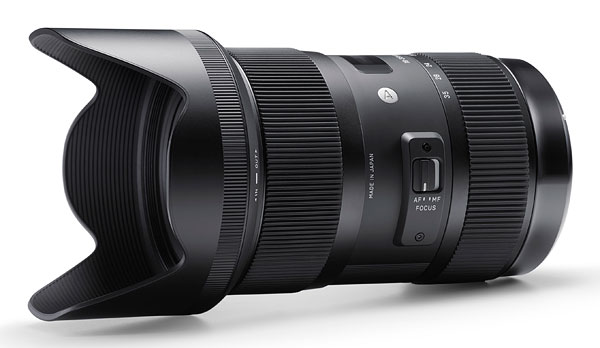
DE: I think you told me once that the costs actually kind of went in the other direction, but the price for your incredible 18-35mm F1.8 DC HSM | Art lens is really extraordinary, because people were expecting it to cost much more. Has your manufacturing process that integrates lens adjustment and calibration reduced manufacturing costs, or perhaps are your overall operations just that much more efficient than some other camera manufacturers?
KY: Actually, the manufacturing cost for that lens is quite high, because the performance is really high -- so we have to use very expensive materials. Although the quality is so high, we felt that the price could not be super-high. The price is a little bit strategic, because this lens will be used for APS-C size cameras, and those cameras' prices are getting lower and lower. So, if we price a lens too high, it wouldn't be so attractive to that customer.
DE: Ah, so a price really reflective of the quality and performance wouldn't match the cost of the body, so you've priced it to make it more accessible.
I think that your lens engineer may have answered this when I was at your headquarters earlier this week, but what specifically led to the decision to produce the 18-35mm? What was the impetus or the strategy or…
KY: Actually, this project was initiated by my father, when he was still running the company.
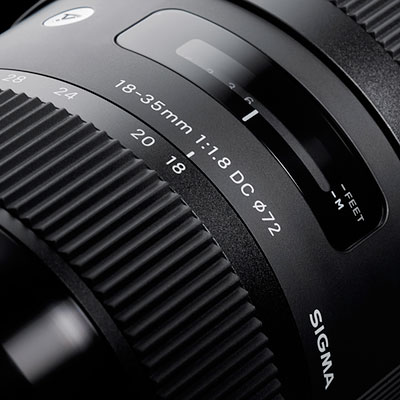
DE: Really? So this has been going on for years now.
KY: Yes. He wanted to make the world's first f/1.8 zoom lens -- that was the beginning. At the time, I was the manager of the optical design division, and I said to the engineers, "I've got this project from my father. Let's study how we can do it." Then we came to the conclusion that it was possible, and we started the project. We arrived at that spec because the APS-C sized sensor has a bit deeper depth of field; so a f/1.8 zoom lens would be a good solution for those users.
DE: That's interesting. So that was in development three years, four years you think?
KY: From the beginning? No, actually -- maybe two years.
DE: Two years? Ah.
KY: Two years or more.
DE: I remember your lens designer Mr. Koyama, whom I met on Monday, said that the intent was to make a lens that would make people say, "Wow!" And I told him they certainly did.
KY: Yes!
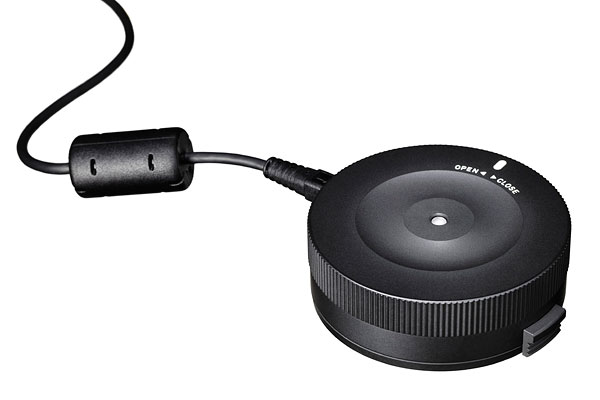
DE: Currently, you're re-releasing some of your old designs as Global Vision lenses. Are those actually redesigns, or is it just that they have improved coatings, and are compatible with the USB dock? [Ed. Note: Sigma's USB dock lets you reprogram the CPU in their Global Vision lenses, micro-adjusting focus accuracy, and reprogramming things like autofocus speed, image stabilization behavior, and other lens parameters.]
KY: Basically, most of the lenses are totally new lenses, completely re-designed. The only exception is the 120-300mm F2.8 DG OS HSM | Sports, where the optics are the same, but we changed some mechanical parts, and also the firmware. But the other lenses we developed from scratch.
DE: Ah, wow. That's a lot of design work.
KY: Basically, the Global Vision lenses have a different product concept, so we have to start from scratch. But just for our 120-300mm f/2.8, we felt that its optical design exactly matched our Global Vision concept, so we decided to use the same optics, then change the mechanical parts and firmware to match the concept.
DE: I remember from the factory tour, you were saying that part of what you're doing now is a bit of a change in direction from when your father ran the company; you've built in more adjustability in the lenses, so you can fine-tune them as they come off the production line. Is that partly how the 120-300mm was in alignment with Global Vision? Does it have that adjustment, or is it more just the optical design.
KY: Yeah, we introduced that fine adjustment, yes.
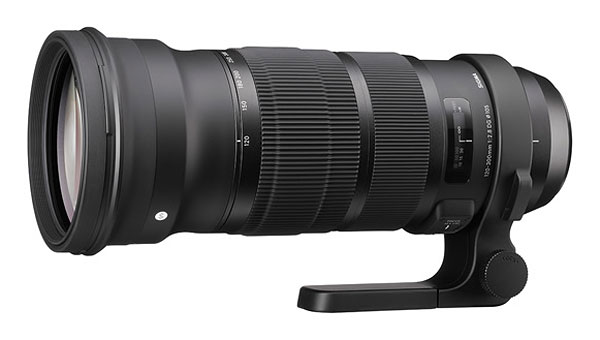
DE: One of our editors commented that he's very excited about the Global Vision series, but we haven't seen follow-on lenses in the DN series. Is it the sort of situation where there are only so many resources to go around, and further down the road, there'll be more DN Global Vision lenses?
KY: It's just a matter of priority. We'd like to release more DN lenses, but we have more demand from conventional DSLRs. The conventional DSLRs -- especially like the Nikon D800 -- have more pixels, they're much sharper, higher resolution. Those cameras require better optics, so we have to consider them.
DE: Plus, I guess there are so many more SLRs out there, there's a much larger body of people buying them.
This is also kind of a strategy question, I guess. Samsung claims to be a major player in the mirrorless market already. I don't recall the exact figures, but I think Samsung said they were in the top three manufacturers of interchangeable lens cameras, and their goal is to be number one by next year. I don't know if they'll make that, but I think that over the holidays, they were actually number two in the U.S.
KY: Really?
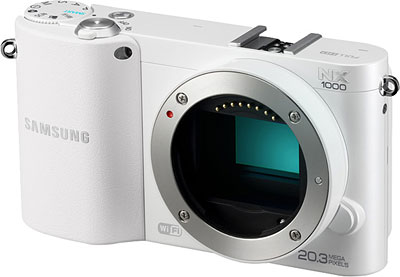
DE: Yes, in mirrorless cameras, at least. Mirrorless is still small compared to SLRs, but it really seems to be gaining a lot of traction. Do you have plans to support Samsung's NX lens mount? You said you want to support everything, but…
KY: We don't have that planned yet.
DE: Not planned yet -- OK. One of my editors asked about Sony FE-compatible lenses, but I think the answer there is pretty clearly "no." That's still a very, very small market.
KY: But we are getting many demands for that FE mount.
DE: For FE-mount, really? Interesting! I guess the users there are really very quality-conscious, so it makes sense that they would like high quality lenses like your Global Vision products.
Have you announced -- or do you have -- any approximate pricing and availability for the 50mm F1.4 DG HSM | Art and the 18-200mm F3.5-6.3 DC Macro OS HSM | Contemporary yet?
KY: I'm still studying it.
DE: Ah, okay. Are there any plans to update your full frame 28-300mm lens to a Global Vision version? That's a much older lens, I think -- full frame.
KY: Tamron has just announced the same spec lens. Yeah, if there's a demand.
DE: Again, if there's a demand -- although, as you said, the full frame people are very high quality-oriented. It may be tough to hit that quality mark with such a long-ratio zoom.
KY: There is no magic in optical design, so if we have to design a 10x zoom, we have to compromise in the quality compared to a prime lens. Our priority is to release more high quality lenses than hyper-zooms.
DE: I'm not sure if this is something you can answer, or would want to go on record with. We found some compatibility issues with some Nikon models -- the D5300 and Df in particular -- and with our own... We use Sigma 70mm F2.8 EX DG Macro lenses for our lab testing, because they're so sharp, and we've seen exposure issues on various Nikon bodies with that lens.
KY: Is that so? I've never heard of it.
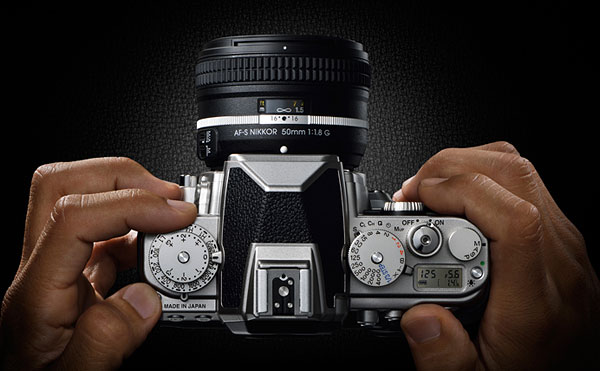
DE: We've occasionally seen compatibility issues between third-party lenses and camera bodies, particularly Nikon bodies. Do you think that some camera manufacturers purposely make it difficult for third-party lenses to be compatible?
KY: I actually have no idea.
DE: It's difficult, but you don't know if they're trying to make it harder?
KY: I know the engineers over there, or at least some of the engineers over there, and I know their perspective. I don't believe their engineers -- given the nature of engineers -- are trying to make things difficult. They just focus on their own product improvement.
DE: So solving the problem, making it better.
KY: Yes, they don't make it more difficult on purpose by themselves; I don't believe so.
DE: That's interesting, your comment about the engineers. It makes sense: Engineers just want to optimize their own designs, not consciously make things more difficult for third parties.
One of our readers asked why you offer so few of your lenses with the Pentax mount, and he also asked about longer telephotos, in particular. If the mounts are fairly simple -- if it's really just a matter of changing out the mount, shouldn't it be possible to make more Pentax lenses? Or is it still just a cost issue, even for a relatively small investment?
[Note, this section has been edited 4/12/14, as I had misunderstood what Yamaki san was saying, see the editorial note following this exchange]
KY: Pentax still uses mechanical parts to control the aperture. So, mechanically, it's totally different from other mounts, even though it uses the same optics. Making a Pentax mount means we have to use special parts just for Pentax mounts.
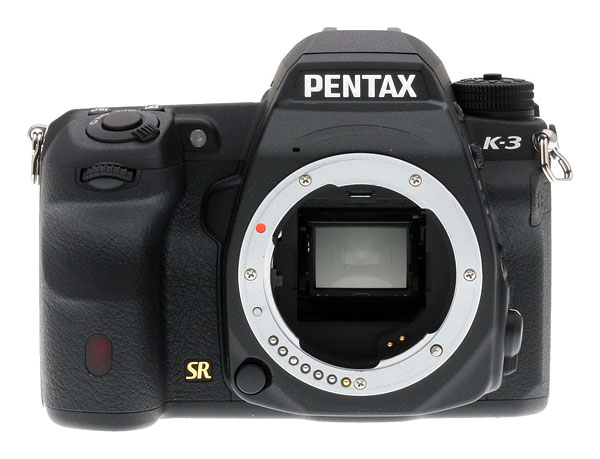
DE: It's a whole different aperture mechanism that you have to use. Ah, that's very interesting.
KY: Yes. So, we'd like to make as many lenses for Pentax as possible, but with very small demand we cannot make them frequently. For such a lens, the long back-order times are a big problem for us. So we cannot make too wide a product line for Pentax. For example, a 300mm f/2.8 -- maybe we can produce this for Pentax once every few months; but some people may need a 300mm f/2.8 now. We cannot make it so often.
DE: Ah -- you can't afford to carry a large inventory given the small sales volume, but you also have a minimum production run that's economically viable. So you end up having long lead times, sometimes. I see, that makes sense, very interesting.
[Ed. Note: I'd originally misinterpreted Yamaki san's comments here, so he clarified what he was saying in a further email exchange I had with him. I had thought he was saying that Pentax lenses were different simply because they used a mechanical aperture coupling, vs an electronic one. As several astute readers pointed out, they do, but so do lenses from Nikon and Sony.
Yamaki san's point is that lenses with mechanical aperture mechanisms require separate production runs to produce each type, vs an electronic system that would just need a different arrangement of contacts and reprogramming of the lens's CPU.
The problem for Pentaxians is that there just aren't enough of them, so demand for Pentax-mount lenses is small to the point that it's economically difficult to produce them, or at least to do so in a way that would keep Pentax users happy.
The issue is that the smaller a production run, the more costly each individual unit is, due to inefficiencies associated with switching the production line from one lens to another. As the run length becomes smaller, that fixed switchover cost become a bigger and bigger part of the cost of each unit. From a practical standpoint, there's a lower limit on run length, below which it's just not profitable for them to produce a product.
For popular lens models, the minimum production run isn't too big a problem for Pentax users, as there's enough demand that Sigma can produce a batch of lenses often enough to more or less keep them in stock in the retail channel. As you get into slightly more obscure, specialized, or perhaps more expensive glass with less demand, though, the minimum affordable production run for a given model might amount to 6 months, a year, or even a couple of years' worth of demand on the Pentax mount.
As Yamaki san explained to me, it wouldn't be viable for him to produce and market a lens that might be unavailable in the market for 6 months or a year at a time - Potential customers would become very unhappy with Sigma over the poor availability. (And, adding my own interpretation here, how could they efficiently let people know "hey, remember that cool lens we said we were making for the Pentax mount that hasn't been available for the last year? It's available now, so get out your wallets!")
At first thought, you might say "well, what's the problem, they can just build a batch of them, and warehouse them until that batch runs out, then do another run." The problem is, doing so would again increase costs, because holding large quantities of lenses in inventory would tie up Sigma's capital, meaning it wasn't available for other things that would give a much higher return. Even if Sigma were able to borrow additional money to use to hold that inventory, they'd be paying interest on it, which would again increase costs.
So, that's the full story: In my latest email with him, Yamaki san expressed what I believe was very genuine regret that he isn't able to bring more of their lenses to the Pentax mount, but can only do so for the most popular models, that will generate enough demand to be produced sustainably.
We had questions from a couple of people about the very long telephotos, but perhaps ones that are not so bright. Professionals want a 400 f/2.8, or a 600mm f/4 -- something very bright. Many amateurs would be happy with f/5.6, especially as the high ISO capabilities of cameras improve. Have you given any thought to that kind of lens in the market?
KY: We already have the 300-800mm F5.6 EX DG APO HSM and 800mm F5.6 EX APO DG HSM.
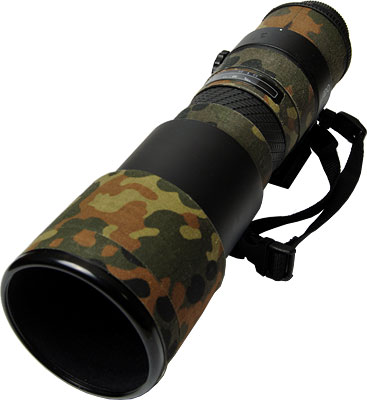
DE: Yes -- I think the readers were thinking of something more in the range of, you know, a 400mm f/5.6 or something like that. I think specifically someone asked about that particular combination.
KY: A long, long time ago, we had a 500mm f/7.2 APO lens which was really, really compact.
DE: It didn't work with phase detection though, right?
KY: Actually, it worked.
DE: Oh, really?
KY: Because it worked up to f/8, but the demand was so small.
DE: There wasn't much demand for it.
KY: That was a bad experience for us, a bad memory.
DE: Ah, I see, you don't want to repeat it -- that's understandable.
Another reader noticed that you started using the term Super Multi-Layer Coating within the past year. The reader's question -- although I'm not sure it actually makes sense -- is "Did you know something about the current Pentax HD coatings?"
I would think that you'd want to make your coatings better all the time, not that you know that Pentax is coming out with something and react to that. Perhaps this is a better question: What is the difference between the Super Multi-Layer Coating and what you had previously? Can you explain either in technical terms, or what the net effect is?
KY: We have been improving our coating methodology constantly, and we made a significant improvement over the years. But it's quite difficult to communicate that way -- it's the same kind of technology, just improved. It's a matter of market communication.
DE: So it's the same multi-layer, multi-refractive index thing, just improved.
KY: Coating is just one part of the anti-flare/anti-ghost technology. We carefully design the mechanical parts so the reflection from the inner parts is reduced also.
DE: Yeah, I remember Mr. Koyama saying that that's why you make the edge of the lenses black, and do ray tracing and make sure there are no reflective pieces inside the lens barrel.
KY: Yes, we made the simulation program ourselves. We simulate all the ghost and flare sources, even when we are designing the optics. We have two dedicated engineers who just simulate the ghosting and check the ghost/flare behavior when we get the first prototype, and then they check the ghost/flare from pre-production, and into production.
DE: So you have two dedicated engineers that just concentrate on flare and ghosting?
KY: Actually three, but one lady is currently taking maternity leave.
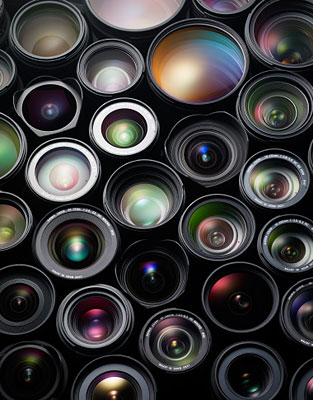
DE: Wow, so you have three people just doing ghost and flare -- that's impressive! So the message on the Super Multi-Layer Coating is that you've been continuously improving your coatings over the years, but now you want to call attention to it and say, "Look, we've been doing this and now it's really super, compared to two years ago". Interesting…
A reader said that you have a current road map that shows a 300mm f/2.8, a 400mm f/2.8, and maybe a 500mm f/4 -- have you actually published that?
KY: No, that's just a rumor.
DE: Just a rumor? Ah, the rumor sites sometimes show things that don't actually come to pass.
In general, competing against Canon and Nikon's own lenses, is your general aim to provide the same or better optical performance but for less money? Or do you think you'll want to provide much better optical performance for the same money?
KY: You mean, how do we compete with those guys?
DE: Yes, what's your strategy against Canon and Nikon?
KY: The basic idea is better optics, and with an affordable price -- that's the basic idea. It depends on the product, of course, but we are trying our best to achieve that goal.
DE: Yeah. Another reader asked specifically about the Quattro cameras. When will they be available in the market -- do you know yet?
KY: We are working on it still, and we don't know exactly when, but we'd like to release it before summer.
DE: Ah, before summer sometime. We'll be very interested in testing it, when it's ready!
I do have some Foveon questions here. I feel bad, you guys have been just kind of sitting there, hanging out! [Ed. Note: The two Foveon people had been sitting through all the above; I appreciate their patience!]
Shri Ramaswami/Foveon: Lenses are interesting!
DE: We've been getting a lot of questions about future products, and obviously, you can't comment on them. Question like "Hey, how about something like an 18-35mm f/1.8 full frame, or a 24mm f/1.8?" -- I know you can't answer questions like those. I think you already did -- or did you? -- answer this: You said you don't know the pricing yet on the 50mm Art lens.
KY: Not yet.
DE: Do you know when that's likely to hit the market, do you have any projections for that yet?
KY: This spring, around the April-May timeframe.
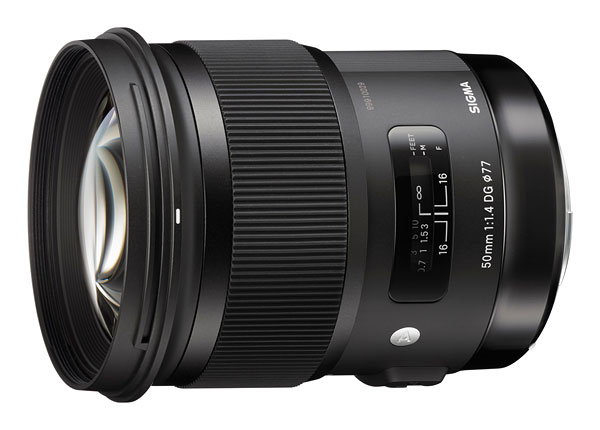
DE: And then another question about the 50mm f/1.4 Art. One of our readers was concerned about onion-ring bokeh.
KY: Oh, yes, yes.
DE: He said on the previous 50mm, one of its strengths was very smooth bokeh, and he's concerned that the 50mm f/1.4 Art lens, using aspherics, may have onion ring. Can you comment on that at all yet?
KY: Yes. We have been working on it, and we improved it.
DE: Improved it? Ah, that's good.
KY: And also, we paid so much attention to the smooth bokeh on this model when we were designing optics. We could simulate it, and looking at the current pre-production model, the bokeh is very smooth like we simulated.
DE: Ah, great, that's good news!
I think this is another one that's in a category you probably can't comment on. Would you consider joining a compact system camera group like Micro Four Thirds, or would you be more likely to strike out on your own -- or do you even see the compact system camera market as worth pursuing?
KY: If we had the unlimited engineering resources I'd like to do it, but our resources are limited. The first priority is to support our current, loyal customers, which are SD-series camera users.
DE: Right, right. If you had twice as many engineers and twice as much money, you could do all kinds of things.
KY: Right.
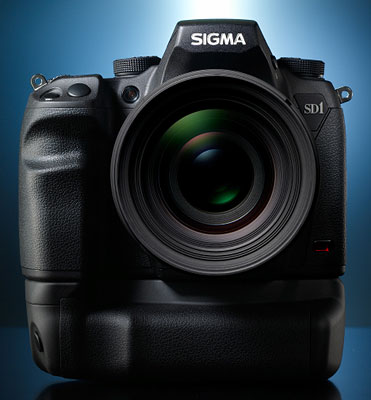
DE: Another reader question is about whether there might be an SD1 Merrill with the Quattro chip, but I suspect you can't anything on that. Likewise, the possibility of full-frame Foveon sensors. One reader asked -- this is actually a gentleman who makes accessory grips for cameras, so he's very interested in grips -- he's curious about the evolution of the dp Quattro design. It's a very unusual design for a camera -- can you elaborate on what led to that shape?
KY: First of all, that camera -- the resolution is super high; it's equivalent to 39 megapixels with a conventional Bayer CFA sensor. So, we don't think that the customer for it will take pictures like a normal compact camera, just *click click click*! Of course, it's up to the customers how they use it, but we assume that customer holds the grip like this, and they hold the lens like this [demonstrating a firm two-handed grip], and that they will shoot very carefully, to minimize blur.
DE: Ah, so because of the high resolution, you're saying the users are going to want to have a very secure grip on the camera -- a solid, two-handed grip.
KY: Yeah, and we shaped the camera to make it as small as possible, but the actual back-end system is huge, like a D4, a D800, or a 1D X.
DE: Oh, really? You mean the circuitry you have inside?
KY: Yes. We use two or three processors, we use a four-channel analog front end, and we have huge memory, so the system is huge -- but we make it very small.
DE: Interesting, interesting.
KY: People say it's big, but it's big compared to the commercial compact camera -- but this is a super-high resolution camera.
DE: It's more like a D4 or something.
KY: Right. The data size from the sensor is huge.
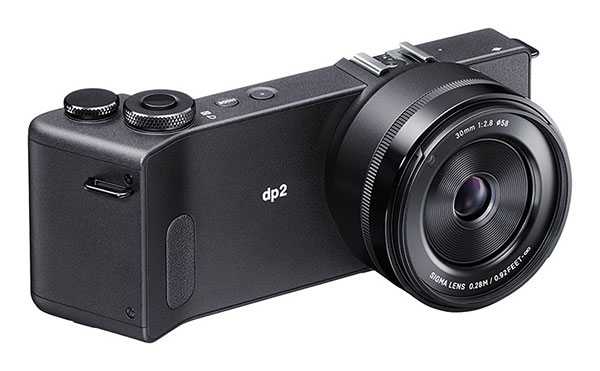
DE: I think this almost the last question for Kazuto. Say you want to make a new lens: How do you decide what combination of aperture and focal length you want to make? How do you decide what you're going to do next?
KY: First of all, we have two ways -- the first one is that we have a product planning division. I discuss a new design with the planning division, and then give a proposal to the engineers. The engineers respond to us, saying whether it's feasible or not. The other way is that engineers propose something to me: "We can do it, we can make this kind of lens; why don't you make it a project?" And sometimes the latter approach makes a great lens.
DE: That's very interesting, I hadn't thought of that. So the product planning people interact with the market to understand where demand is.
KY: Right. I pay very, very careful attention so the project planning division doesn't have a superpower, because if they make a perfect plan then the engineers just follow that spec, so we cannot make magic. If the planning division gives a very broad spec, a very basic, loose spec, and just give the concept, then that lets the engineers think about it, and results in a good idea to develop.
DE: It's better for you to balance between product planning and engineering, to get something you can manufacture and make affordable.
KY: Yes, and engineers are more knowledgeable than the project planning team.
DE: Of course, project planning might say "We want an 18-200mm f/2.0," you know? And it can't be more than a plan; it may not be possible to manufacture it at all.
KY: My point is that normally the planning division people think inside of the box, but the engineers -- if they know the concept we are aiming for, they can come up with a proposal, they can think out of the box.
DE: I see. Yeah, yeah, that's interesting.
KY: So, maybe the specs say something, but the engineers say "If you allow me to make it this big, I can make this spec much higher," or something like that. If product planning makes a very precise spec, the engineers just follow it and make a very ordinary product, but I don't like that; I like to have engineers make magic. "May I make it heavier? If you allow me to do that, I can hit this spec of performance." That's my point.
DE: Oh, that's very interesting, yeah. So the product planners -- or the market, for that matter -- might say that people just want "X", but they don't know what's possible. So your approach is to have product planning just say, "Well, let's make a very fast, wide angle zoom," and then let the engineers do what they can. And then they'll say "If it can cost this much, we'll do this, or if we can make it bigger, we'll do something else." That's very interesting.
KY: We don't always do that. Sometimes, it's just a specific a request from the market that we follow.
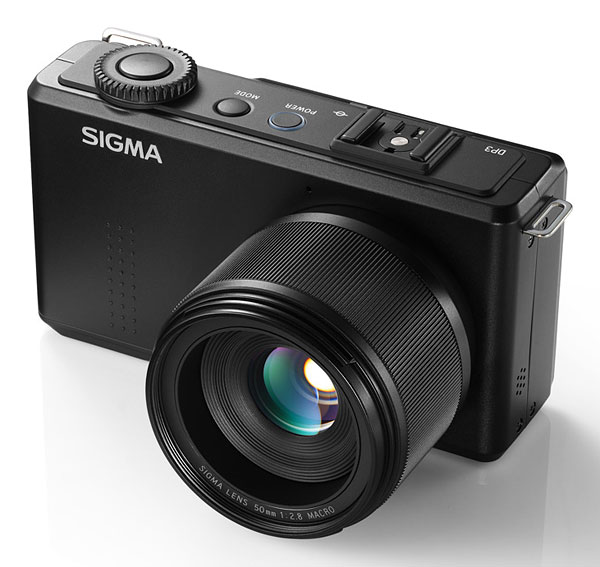
DE: That's very interesting. This is getting into the Foveon area more, but really, it's a camera question for you, Kazuto-san: So far, your large sensor, small body cameras have all had fixed focal length primes. Why haven't you considered making a DP-series camera with a zoom lens on it?
KY: We studied that several times, but we found that the lens becomes very bulky.
DE: Ah, so you would get away from the idea of a very compact camera.
KY: But we have not given up, we still keep studying it. You can consider the lens -- the DP camera has an APS-C sized lens; we have several zoom lenses for APS-C size. You just imagine…
DE: Ah, yeah. You put the 18-35mm f/1.8 in front of the DP camera and all of a sudden, the lens is bigger than the camera. I see.
[At this point, we switched topics to discuss the new Foveon sensor chip that will be used in the Quattro-series cameras, which has a somewhat different color pixel arrangement than previous Foveon sensors. We'll publish an account of that discussion very shortly in a separate article.]
(Sigma 500mm f/7.2 lens image courtesy of Felix Stember / Flickr. Used under a CC BY-SA 2.0 license.)